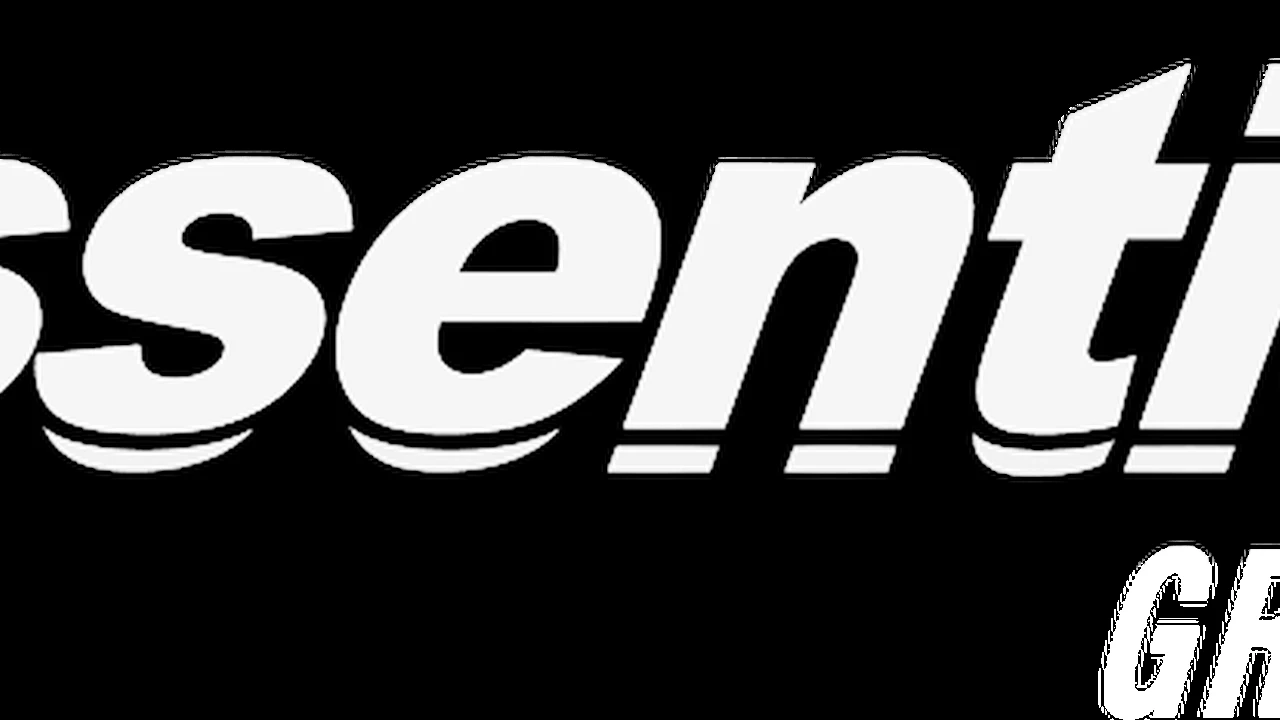3 Essential Financial Statements for Business Owners
Understand the 3 most critical strategies businesses must employ to effectively adapt to dynamic market changes and stay resilient.

3 Essential Strategies for Adapting to Market Changes
Hey there, fellow entrepreneurs and business leaders! In today's fast-paced world, market changes aren't just a possibility; they're a constant. Think about it: new technologies pop up, consumer behaviors shift overnight, global events shake things up, and suddenly, what worked yesterday might not work tomorrow. It's like trying to hit a moving target while riding a unicycle – challenging, right? But here's the good news: adapting isn't just about surviving; it's about thriving. It's about seeing those shifts not as threats, but as golden opportunities to innovate, grow, and even redefine your business. So, let's dive into three absolutely essential strategies that will help your business not just weather the storm, but actually dance in the rain and come out stronger on the other side.
Strategy 1 Embrace Agility and Flexibility in Business Operations
First up, we've got agility and flexibility. This isn't just a buzzword; it's a mindset and a practical approach to how you run your business. Imagine your business as a nimble speedboat rather than a giant tanker. When the waves get rough, the speedboat can quickly change direction, while the tanker takes ages to turn. That's the essence of agility.
What is Business Agility and Why Does it Matter
Business agility means your organization can respond quickly and effectively to changes in the market, technology, or customer demands. It's about being proactive, not just reactive. Why is this so crucial? Because the market doesn't wait. If you're slow to adapt, your competitors will zoom past you, or worse, a new disruptor will emerge and eat your lunch. Agility allows you to pivot, experiment, and iterate without massive overheads or lengthy decision-making processes.
Key Components of an Agile Business Structure
So, how do you build this speedboat of a business? It starts with a few key components:
- Flat Hierarchies: Ditch the rigid, top-down command structure. Empower your teams to make decisions closer to the action. This speeds up response times and fosters a sense of ownership.
- Cross-Functional Teams: Break down silos! Get people from different departments working together on projects. This brings diverse perspectives and accelerates problem-solving.
- Iterative Development: Instead of trying to build the perfect product or service in one go, launch minimum viable products (MVPs), gather feedback, and continuously improve. Think of it like building a car by first making a skateboard, then a scooter, then a bicycle, and so on.
- Technology Adoption: Leverage tools that support flexibility. Cloud-based solutions, collaboration platforms, and automation can make a huge difference.
Practical Tools for Enhancing Agility and Flexibility
Now, let's talk about some concrete tools that can help you become more agile. These aren't just fancy gadgets; they're essential for modern business operations.
Project Management Software for Agile Workflows
For managing projects in an agile way, you need tools that support iterative development and team collaboration. Here are a few top picks:
- Jira: This is a powerhouse, especially for software development teams, but it's super adaptable for any project. It excels at Scrum and Kanban methodologies, allowing you to track tasks, sprints, and releases with incredible detail. It integrates with tons of other tools too.
- Trello: If you're looking for something more visual and straightforward, Trello is fantastic. It uses a Kanban-style board with cards and lists, making it easy to see what's being worked on, who's doing it, and where it stands. Great for smaller teams or less complex projects.
- Asana: Asana offers a more comprehensive project management solution with various views (list, board, calendar, timeline). It's great for managing multiple projects and tasks across different teams, with robust features for task assignment, deadlines, and progress tracking.
- Monday.com: This platform is incredibly versatile and visually appealing. It's a work OS that allows you to build custom workflows for almost anything, from project management to CRM. Its drag-and-drop interface makes it user-friendly, and it offers a wide range of integrations.
Comparison and Pricing: Jira can be a bit complex for beginners but offers unparalleled depth for technical teams, with pricing starting from free for small teams up to enterprise solutions. Trello is super easy to use, with a generous free tier and paid plans for more features. Asana has a good free tier for individuals and small teams, with paid plans offering more advanced features and integrations. Monday.com is known for its flexibility and visual appeal, with pricing tiers based on the number of users and features, often starting with a free trial.
Communication and Collaboration Platforms for Remote and Hybrid Teams
In an agile environment, communication is king. Especially with remote or hybrid teams, you need robust platforms.
- Slack: This is a real-time messaging app that organizes conversations into channels, making it easy to keep discussions focused and searchable. It integrates with hundreds of other apps, making it a central hub for team communication.
- Microsoft Teams: If your business is already in the Microsoft ecosystem, Teams is a natural fit. It combines chat, video meetings, file storage, and application integration, all within a single interface.
- Zoom: While primarily known for video conferencing, Zoom also offers chat and webinar functionalities. It's essential for face-to-face interactions, especially when teams are distributed.
- Google Workspace (formerly G Suite): This suite includes Gmail, Calendar, Drive, Docs, Sheets, and Meet. It's a comprehensive set of tools for collaboration, document sharing, and communication, all cloud-based and accessible from anywhere.
Comparison and Pricing: Slack offers a free tier with limited history and paid plans with more features and integrations. Microsoft Teams has a free version and is often bundled with Microsoft 365 subscriptions. Zoom has a popular free tier for meetings up to 40 minutes and various paid plans for longer meetings and advanced features. Google Workspace is a subscription service, offering different tiers based on storage, features, and support.
Cloud Computing Services for Scalability and Resource Management
Cloud services are the backbone of modern agile businesses, offering scalability and flexibility in infrastructure.
- Amazon Web Services (AWS): The undisputed leader in cloud computing, AWS offers a vast array of services, from computing power (EC2) and storage (S3) to databases, machine learning, and IoT. It's incredibly powerful and scalable, suitable for businesses of all sizes.
- Microsoft Azure: Microsoft's cloud platform is a strong competitor to AWS, offering similar services and deep integration with Microsoft products. It's a great choice for businesses already heavily invested in Microsoft technologies.
- Google Cloud Platform (GCP): Google's offering is known for its strong data analytics and machine learning capabilities, leveraging Google's own infrastructure. It's often favored by data-intensive businesses and startups.
- DigitalOcean: For developers and smaller businesses looking for simpler, more developer-friendly cloud infrastructure, DigitalOcean offers virtual private servers (Droplets), managed databases, and object storage at competitive prices.
Comparison and Pricing: AWS, Azure, and GCP all operate on a pay-as-you-go model, with complex pricing structures that can be optimized for cost. They all offer free tiers for certain services to get started. DigitalOcean has more straightforward pricing, often based on fixed monthly costs for Droplets, making it easier to predict expenses for smaller deployments.
Strategy 2 Prioritize Customer Centricity and Feedback Loops
Next up, let's talk about putting your customers at the absolute center of everything you do. This isn't just about good customer service; it's about deeply understanding their needs, anticipating their desires, and building your business around their experience. In a rapidly changing market, your customers are your compass.
Understanding Customer Centricity in a Dynamic Market
Customer centricity means shifting your focus from just selling products or services to creating value for your customers at every touchpoint. Why is this even more critical when the market is in flux? Because customer needs and expectations are changing just as rapidly. What they valued yesterday might be irrelevant tomorrow. By staying close to your customers, you can spot these shifts early, adapt your offerings, and maintain relevance. It's about building relationships, not just transactions.
Establishing Effective Customer Feedback Mechanisms
So, how do you actually listen to your customers effectively? You need robust feedback mechanisms. This isn't just about sending out a survey once a year; it's about continuous listening.
- Surveys and Questionnaires: Still a classic for a reason. Use tools to create targeted surveys at different points in the customer journey.
- Customer Interviews and Focus Groups: Go deeper. Talk to your customers directly. Understand their pain points, their aspirations, and their unmet needs.
- Social Media Listening: Your customers are talking about you (and your competitors) online. Monitor social media for mentions, sentiment, and trends.
- User Testing and A/B Testing: For digital products, observe how users interact with your website or app. A/B test different versions to see what performs best.
- Customer Support Interactions: Your support team is on the front lines. They hear directly about problems and frustrations. Make sure their insights are captured and acted upon.
- Net Promoter Score (NPS) and Customer Satisfaction (CSAT) Surveys: These are quick, quantifiable metrics that give you a pulse on customer loyalty and satisfaction.
Tools for Customer Relationship Management CRM and Feedback Collection
To manage all this customer data and feedback, you'll need some powerful tools. These aren't just for sales; they're for building a holistic view of your customer.
CRM Software for Comprehensive Customer Insights
CRM (Customer Relationship Management) software helps you manage all your interactions and data with current and potential customers. It's your central hub for customer information.
- Salesforce: The behemoth of CRM, Salesforce offers a comprehensive suite of tools for sales, service, marketing, and analytics. It's highly customizable and scalable, suitable for businesses of all sizes, from small startups to large enterprises.
- HubSpot CRM: HubSpot offers a very popular free CRM that's great for small businesses getting started. It integrates seamlessly with their marketing, sales, and service hubs, providing an all-in-one platform. It's known for its user-friendliness.
- Zoho CRM: Zoho offers a robust and affordable CRM solution, often praised for its extensive features and customization options. It's part of a larger suite of Zoho business applications, making it a good choice if you're looking for an integrated ecosystem.
- Pipedrive: Specifically designed for sales teams, Pipedrive focuses on pipeline management and helping sales reps close deals more efficiently. It's very visual and intuitive, making it easy to track leads and deals through various stages.
Comparison and Pricing: Salesforce is powerful but can be complex and expensive, with various editions and add-ons. HubSpot has a strong free CRM, with paid tiers for more advanced features in their sales, marketing, and service hubs. Zoho CRM offers competitive pricing, often more affordable than Salesforce, with a free edition for up to three users. Pipedrive is known for its straightforward, per-user pricing, making it predictable for sales teams.
Customer Feedback and Survey Tools
Collecting feedback needs to be easy for both you and your customers.
- SurveyMonkey: One of the most popular survey tools, SurveyMonkey offers a wide range of templates, question types, and analysis features. It's easy to use for creating professional surveys for various purposes.
- Typeform: Typeform stands out with its beautiful, conversational interface, making surveys feel less like a chore and more like an engaging conversation. This often leads to higher completion rates.
- Qualtrics: For more advanced research and enterprise-level feedback management, Qualtrics is a powerful platform. It offers sophisticated survey design, advanced analytics, and integration with other business systems.
- Hotjar: Hotjar is unique because it combines qualitative and quantitative feedback. It offers heatmaps, session recordings, and on-site polls/surveys, giving you a visual understanding of how users interact with your website.
Comparison and Pricing: SurveyMonkey has a free basic plan and various paid plans for more features and responses. Typeform offers a free plan with limited responses and paid plans that unlock more features and integrations. Qualtrics is an enterprise-grade solution, typically with custom pricing. Hotjar has a generous free basic plan for smaller sites and paid plans based on traffic volume.
Social Listening and Reputation Management Platforms
Knowing what people are saying about your brand online is crucial.
- Brandwatch: A comprehensive social listening platform that allows you to monitor mentions of your brand, competitors, and industry trends across various social media channels and the web. It offers powerful analytics and sentiment analysis.
- Sprout Social: More than just listening, Sprout Social is a complete social media management platform that includes listening, publishing, engagement, and analytics. It's great for managing your social presence and understanding your audience.
- Mention: A simpler, more affordable tool for real-time media monitoring. Mention tracks mentions of your brand across social media, news sites, blogs, and forums, sending you alerts so you can respond quickly.
- Google Alerts: A free and simple tool from Google that sends you email notifications whenever new content matching your keywords appears online. It's a good starting point for basic brand monitoring.
Comparison and Pricing: Brandwatch is an enterprise-level tool with custom pricing. Sprout Social offers various paid plans based on features and users. Mention has a free plan for basic monitoring and paid plans for more extensive tracking and features. Google Alerts is completely free.
Strategy 3 Foster a Culture of Continuous Learning and Innovation
Finally, let's talk about building a business that's always learning and always pushing the boundaries. In a world where change is the only constant, standing still is essentially moving backward. A culture of continuous learning and innovation isn't just a nice-to-have; it's a survival mechanism and a growth engine.
The Importance of Lifelong Learning for Business Growth
Lifelong learning, both for individuals and the organization as a whole, is paramount. Why? Because new challenges require new solutions, and new opportunities demand new skills. If your team isn't continuously learning about new technologies, market trends, or customer insights, your business will quickly become obsolete. It's about staying curious, embracing new knowledge, and applying it to solve problems and create value. This isn't just about formal training; it's about creating an environment where learning is embedded in daily work.
Encouraging Experimentation and Risk-Taking
Innovation doesn't happen in a vacuum. It requires experimentation and a willingness to take calculated risks. This means:
- Psychological Safety: Create an environment where people feel safe to propose new ideas, even if they seem crazy, and to fail without fear of punishment. Failure should be seen as a learning opportunity.
- Dedicated Innovation Time: Allow employees time to work on passion projects or explore new ideas that might not be directly related to their daily tasks. Google's '20% time' is a famous example.
- Small-Scale Experiments: Encourage testing new ideas on a small scale before committing significant resources. This minimizes risk and allows for quick learning.
- Cross-Pollination of Ideas: Facilitate interactions between different departments or even external partners to spark new ideas and perspectives.
Platforms and Resources for Employee Development and Innovation
To support a culture of learning and innovation, you need to provide the right resources and platforms.
Online Learning Platforms for Skill Development
These platforms offer a vast library of courses to upskill your team in various areas, from technical skills to soft skills.
- Coursera: Partners with universities and companies to offer courses, specializations, and degrees in a wide range of subjects. Great for structured learning paths.
- Udemy Business: Offers thousands of courses taught by experts, covering everything from coding and marketing to leadership and personal development. It's very flexible and often used for corporate training.
- LinkedIn Learning: Integrates with LinkedIn profiles, offering courses taught by industry experts. It's strong in business, creative, and tech skills, and personalized recommendations can help employees find relevant content.
- edX: Similar to Coursera, edX offers high-quality courses from top universities and institutions, often with a focus on academic rigor.
Comparison and Pricing: Coursera offers individual courses, specializations, and subscriptions (Coursera Plus). Udemy Business is typically a subscription service for organizations, with pricing based on the number of users. LinkedIn Learning is often included with LinkedIn Premium subscriptions or available as a standalone corporate offering. edX offers individual courses, some free to audit, and paid verified certificates or programs.
Innovation Management Software for Idea Generation and Tracking
These tools help you capture, evaluate, and manage innovative ideas from your team.
- IdeaScale: A comprehensive idea management platform that allows organizations to crowdsource ideas from employees, customers, and partners. It supports idea submission, voting, commenting, and evaluation workflows.
- Brightidea: An enterprise-grade innovation management platform that helps companies manage their entire innovation lifecycle, from idea generation to portfolio management and execution.
- Miro: While primarily a collaborative online whiteboard, Miro is excellent for brainstorming, ideation sessions, and visual project planning. Its flexibility makes it a great tool for fostering creative thinking.
- Slack (with integrations): While primarily a communication tool, Slack can be used for idea generation through dedicated channels and integrations with other idea management apps.
Comparison and Pricing: IdeaScale and Brightidea are typically enterprise solutions with custom pricing based on features and user count. Miro offers a generous free tier for basic use and paid plans for more features and team collaboration. Slack has a free tier and paid plans, with integrations often having their own pricing.
Knowledge Management Systems for Internal Learning and Documentation
To ensure learning is shared and accessible, a good knowledge management system is key.
- Confluence: From Atlassian (makers of Jira), Confluence is a powerful team workspace where knowledge and collaboration meet. It's great for creating, organizing, and sharing documents, meeting notes, project plans, and more.
- Notion: A versatile workspace that combines notes, databases, wikis, calendars, and reminders. It's incredibly flexible and can be customized to serve as a company wiki, project management tool, or personal organizer.
- SharePoint: Microsoft's document management and collaboration platform, often used by larger organizations within the Microsoft ecosystem. It's powerful for content management, intranets, and team sites.
- Guru: Guru is a knowledge management solution designed to capture and deliver expert knowledge to employees in real-time, right where they work. It integrates with various communication and workflow tools.
Comparison and Pricing: Confluence offers a free tier for small teams and paid plans based on user count. Notion has a free personal plan and paid team plans with more features and storage. SharePoint is typically part of Microsoft 365 subscriptions. Guru offers a free starter plan and paid plans based on features and users.
So there you have it! By embracing agility, putting your customers first, and fostering a culture of continuous learning and innovation, your business won't just survive the ever-changing market; it'll lead the way. It's a journey, not a destination, so keep experimenting, keep learning, and keep growing!
:max_bytes(150000):strip_icc()/277019-baked-pork-chops-with-cream-of-mushroom-soup-DDMFS-beauty-4x3-BG-7505-5762b731cf30447d9cbbbbbf387beafa.jpg)






